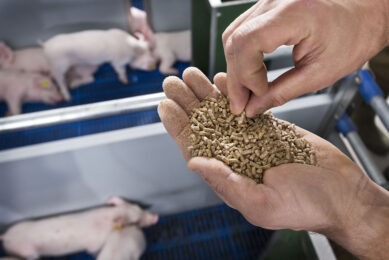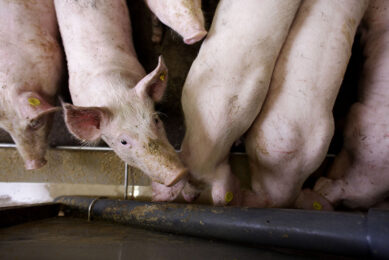Lactose Specs
We must briefly discuss here the issue of lactose specifications in piglet diets. Why? Simply because prices of dairy products, the source of lactose, are not likely to return to ‘normal’ levels, at least in the foreseeable future. And, lactose, in my opinion, is one of the most, if not the most, important aspects of any successful piglet formula.
We must briefly discuss here the issue of lactose specifications in piglet diets. Why? Simply because prices of dairy products, the source of lactose, are not likely to return to ‘normal’ levels, at least in the foreseeable future. And, lactose, in my opinion, is one of the most, if not the most, important aspects of any successful piglet formula.
Several studies have investigated the dietary lactose concentrations necessary for maximal growth performance in weaned pigs. Stretching back to 1993, when the first plasma-based diets were making their impact, up to today, researchers throughout the world try to refine and define the various levels of lactose needed under different conditions and for disparate objectives.
Despite, or in spite of, this plethora of data, there are some central themes that emerge regarding lactose specifications. These can be surmised easily in three principles:
- First, high concentrations of lactose are needed immediately post-weaning to promote high performance and health.
- Second, lactose concentrations must be reduced rapidly afterwards to avoid secretory diarrhea and reduce feed cost.
- Third, piglets heavier than 10-12 kg in body weight do not benefit greatly, if any, from supplemental lactose, assuming they were weaned properly.
In practice, the following recommendations for dietary lactose specifications may be used as guidance in establishing actual formulas.
Recommended dietary specifications for lactose equivalents (%) in piglet diets1
Body weight (kg) | Minimum 2 | Optimum 3 | Maximum 4 |
4-6 | 20 | 30 | 40 |
6-8 | 10 | 20 | 30 |
8-12 | 5 | 10 | 15 |
12-20 | 0 | 0 | 5 |
20-30 | 0 | 0 | 0 |
1 Lactose equivalents include lactose and other simple sugars such as dextrose and sucrose.
2 Minimum concentrations for acceptable growth performance in low-cost production systems. Also, suitable for scouring pigs.
3 Optimum concentrations for balanced diet cost and growth performance under healthy conditions.
4 Maximum concentrations for high growth performance, but not for pigs susceptible to scours.
Adapted from Mavromichalis (2006) Applied Nutrition for Young Pigs. CAB International.
As a final note, I would like to add that the addition of animal plasma may lower lactose requirements as it promotes high feed intake post-weaning. For example, in a USA trial, pigs fed diets with plasma required about 50% less lactose for maximal growth performance during the first week post-weaning compared with pigs receiving diets without any plasma.
Join 18,000+ subscribers
Subscribe to our newsletter to stay updated about all the need-to-know content in the pigsector, three times a week. Beheer
Beheer










 WP Admin
WP Admin  Bewerk bericht
Bewerk bericht